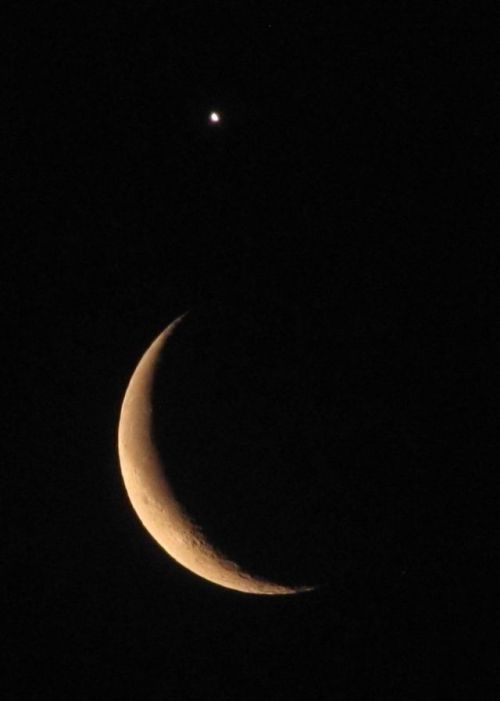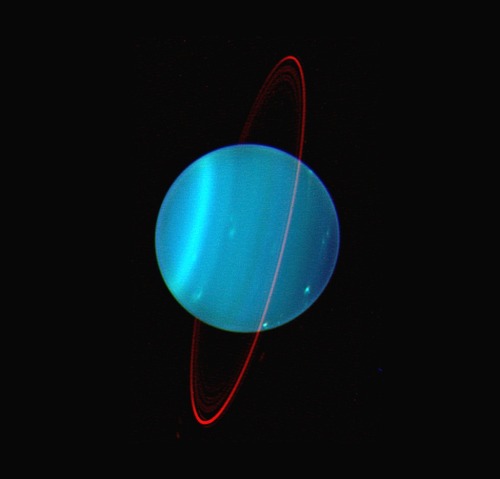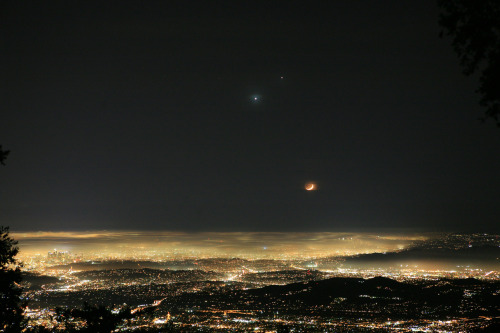Solar System: Things To Know This Week
Solar System: Things to Know This Week
Go for Venus! Fifty-five years ago this week, Mariner 2, the first fully successful mission to explore another planet launched from Cape Canaveral in Florida. Here are 10 things to know about Mariner 2.
1. Interplanetary Cruise

On August 27, 1962, Mariner 2 launched on a three and a half month journey to Venus. The little spacecraft flew within 22,000 miles (about 35,000 kilometers) of the planet.
2. Quick Study

Mariner 2’s scan of Venus lasted only 42 minutes. And, like most of our visits to new places, the mission rewrote the books on what we know about Earth’s sister planet.
3. Hot Planet

The spacecraft showed that surface temperature on Venus was hot enough to melt lead: at least 797 degrees Fahrenheit (425 degrees Celsius) on both the day and night sides.
4. Continuous Clouds
The clouds that make Venus shine so bright in Earth’s skies are dozens of miles thick and permanent. It’s always cloudy on Venus, and the thick clouds trap heat - contributing to a runaway “greenhouse effect.”
5. Night Light

Those clouds are why Venus shines so brightly in Earth’s night sky. The clouds reflect and scatter sunlight, making Venus second only to our Moon in celestial brightness.
6. Under Pressure
Venus’ clouds also create crushing pressure. Mariner 2’s scan revealed pressure on the surface of Venus is equal to pressure thousands of feet under Earth’s deepest oceans.
7. Slow Turn
Mariner 2 found Venus rotates very slowly, and in the opposite direction of most planets in our solar system.
8. Space Travel Is Tough
Mariner 2 was a remarkable accomplishment, considering that in 1962 engineers were still in the very early stages of figuring out how operate spacecraft beyond Earth orbit. The first five interplanetary missions launched - by the U.S. and Soviet Union, the only two spacefaring nations at the time - were unsuccessful.
9. Not Ready for Its Close Up
Mariner 2 carried no cameras. The first close-up pictures of Venus came from NASA’s Mariner 10 in 1974.
10. Hot Shot

The first (and still incredibly rare) photo of the surface of Venus was taken by the Soviet Venera 9 lander, which survived for a little more than a minute under the crushing pressure and intense heat on the ground.
Make sure to follow us on Tumblr for your regular dose of space: http://nasa.tumblr.com
More Posts from Venusearthpassage and Others

(NASA) Venus at Night in Infrared from Akatsuki
Image Credit: JAXA, ISAS, DARTS; Processing & Copyright: Damia Bouic
Why is Venus so different from Earth? To help find out, Japan launched the robotic Akatsuki spacecraft which entered orbit around Venus late in 2015 after an unplanned five-year adventure around the inner Solar System. Even though Akatsuki was past its original planned lifetime, the spacecraft and instruments were operating so well that much of its original mission was reinstated. Also known as the Venus Climate Orbiter, Akatsuki’s instruments investigated unknowns about Earth’s sister planet, including whether volcanoes are still active, whether lightning occurs in the dense atmosphere, and why wind speeds greatly exceed the planet’s rotation speed. In the featured image taken by Akatsuki’s IR2 camera, Venus’s night side shows a jagged-edged equatorial band of high dark clouds absorbing infrared light from hotter layers deeper in Venus’ atmosphere. The bright orange and black stripe on the upper right is a false digital artifact that covers part of the much brighter day side of Venus. Analyses of Akatsuki images and data has shown that Venus has equatorial jet similar to Earth’s jet stream.
Source

Pioneer Venus Artwork
Artist’s concept of Pioneer Venus mission approaching the planet.
During a 14-year orbit of Venus, Pioneer Venus 1 used radar to map the surface at a resolution of 75 km (47 miles). It found the planet to be generally smoother than Earth, though with a mountain higher than Mt. Everest and a chasm deeper than the Grand Canyon. The orbiter also found Venus to be more spherical than Earth, consistent with the planet’s much slower rotation rate (one Venus day equals 243 Earth days). It confirmed that Venus has little, if any, magnetic field and found the clouds to consist mainly of sulfuric acid. Measurements of this chemical’s decline in the atmosphere over the course of the mission suggested that the spacecraft arrived soon after a large volcanic eruption, which may also account for the prodigious lightning it observed.
After a course correction on 16 August 1978, Pioneer Venus 2 released the 1.5-m diameter large probe on 16 November 1978, at about 11.1 million km from the planet. Four days later, the bus released the three small probes while 9.3 million km from Venus. All five components reached the Venusian atmosphere on 9 December 1978, with the large probe entering first.
Data from the probes indicated that between 10 and 50 km, there is almost no convection in the Venusian atmosphere. Below a haze layer at 30 km, the atmosphere appears to be relatively clear. Amazingly, two of three probes survived the hard impact. The so-called Day Probe transmitted data from the surface for 67.5 minutes before succumbing to the high temperatures and power depletion.
Credit: NASA/Rick Guidice

Moon with Venus

Bruce McCandless II (June 8, 1937 – December 21, 2017)
Rest In Peace
Ten interesting facts about Uranus
Like the classical planets, Uranus is visible to the naked eye, but it was never recognised as a planet by ancient observers because of its dimness and slow orbit. Sir William Herschel announced its discovery on 13 March 1781, expanding the known boundaries of the Solar System for the first time in history and making Uranus the first planet discovered with a telescope.

1° Uranus is the seventh planet from the Sun. It has the third-largest planetary radius and fourth-largest planetary mass in the Solar System. Uranus is similar in composition to Neptune, and both have different bulk chemical composition from that of the larger gas giants Jupiter and Saturn.

2° Like all of the giant planets, Uranus has its share of moons. At present, astronomers have confirmed the existence of 27 natural satellites. But for the most part, these moons are small and irregular.

3° Uranus’ moons are named after characters created by William Shakespeare and Alexander Pope. These include Oberon, Titania and Miranda. All are frozen worlds with dark surfaces. Some are ice and rock mixtures. The most interesting Uranian moon is Miranda; it has ice canyons, terraces, and other strange-looking surface areas.

4° Only one spacecraft in the history of spaceflight has ever made a close approach to Uranus. NASA’s Voyager 2 conducted its closest approach to Uranus on January 24th, 1986, passing within 81,000 km of the cloud tops of Uranus. It took thousands of photographs of the gas/ice giant and its moons before speeding off towards its next target: Neptune.

5° Uranus has rings: All the gas and ice giants have their own ring systems, and Uranus’ is the second most dramatic set of rings in the Solar System.

6° Uranus makes one trip around the Sun every 84 Earth years. During some parts of its orbit one or the other of its poles point directly at the Sun and get about 42 years of direct sunlight. The rest of the time they are in darkness.

7° All of the planets in the Solar System rotate on their axis, with a tilt that’s similar to the Sun. In many cases, planet’s have an axial tilt, where one of their poles will be inclined slightly towards the Sun. But the axial tilt of Uranus is a staggering 98 degrees! In other words, the planet is rotating on its side.

8° Uranus is approximately 4 times the sizes of Earth and 63 times its volume.

9° Uranus is blue-green in color, the result of methane in its mostly hydrogen-helium atmosphere. The planet is often dubbed an ice giant, since 80 percent or more of its mass is made up of a fluid mix of water, methane, and ammonia ices.

10° Uranus hits the coldest temperatures of any planet. With minimum atmospheric temperature of -224°C Uranus is nearly coldest planet in the solar system. While Neptune doesn’t get as cold as Uranus it is on average colder. The upper atmosphere of Uranus is covered by a methane haze which hides the storms that take place in the cloud decks.
source 1, source 2, source 2
Images credit: NASA

The 4 Terrestrial Planets
'Sail-Rover' could make Venus exploration possible.

NASA’s Innovative Advanced Concepts program is funding a study into the possible use of a sail powered rover to explore the 500°C surface temperatures of Venus.
Read More
Shared from Sky News: Venus has more volcanoes than we thought - and this map shows where they are

Could we create dark matter?
85% of the matter in our universe is a mystery. We don’t know what it’s made of, which is why we call it dark matter. But we know it’s out there because we can observe its gravitational attraction on galaxies and other celestial objects.

We’ve yet to directly observe dark matter, but scientists theorize that we may actually be able to create it in the most powerful particle collider in the world. That’s the 27 kilometer-long Large Hadron Collider, or LHC, in Geneva, Switzerland.

So how would that work? In the LHC, two proton beams move in opposite directions and are accelerated to near the speed of light. At four collision points, the beams cross and protons smash into each other.

Protons are made of much smaller components called quarks and gluons.

In most ordinary collisions, the two protons pass through each other without any significant outcome.

However, in about one in a million collisions, two components hit each other so violently, that most of the collision energy is set free producing thousands of new particles.

It’s only in these collisions that very massive particles, like the theorized dark matter, can be produced.

So it takes quadrillions of collisions combined with theoretical models to even start to look for dark matter. That’s what the LHC is currently doing. By generating a mountain of data, scientists at CERN are hoping to find more tiny bumps in graphs that will provide evidence for yet unknown particles, like dark matter. Or maybe what they’ll find won’t be dark matter, but something else that would reshape our understanding of how the universe works entirely.
And that’s part of the fun at this point. We have no idea what they’re going to find.
From the TED-Ed Lesson Could we create dark matter? - Rolf Landua
Animation by Lazy Chief

The sky seemed to smile over much of planet Earth. Visible the world over was an unusual superposition of our Moon and the planets Venus and Jupiter. A crescent Moon over Los Angeles appears to be a smile when paired with the planetary conjunction of seemingly nearby Jupiter and Venus.
-
 complicaitlin liked this · 4 years ago
complicaitlin liked this · 4 years ago -
 climate-changing liked this · 6 years ago
climate-changing liked this · 6 years ago -
 sensoryo reblogged this · 6 years ago
sensoryo reblogged this · 6 years ago -
 marizeoliver liked this · 6 years ago
marizeoliver liked this · 6 years ago -
 dewptldor-blog liked this · 7 years ago
dewptldor-blog liked this · 7 years ago -
 venusearthpassage reblogged this · 7 years ago
venusearthpassage reblogged this · 7 years ago -
 catyuy reblogged this · 7 years ago
catyuy reblogged this · 7 years ago -
 venusearthpassage reblogged this · 7 years ago
venusearthpassage reblogged this · 7 years ago -
 kelicalypso reblogged this · 7 years ago
kelicalypso reblogged this · 7 years ago -
 fleurdebach5-blog liked this · 7 years ago
fleurdebach5-blog liked this · 7 years ago -
 gennady40 reblogged this · 7 years ago
gennady40 reblogged this · 7 years ago -
 gennady40 liked this · 7 years ago
gennady40 liked this · 7 years ago -
 maya-rin reblogged this · 7 years ago
maya-rin reblogged this · 7 years ago -
 maya-rin liked this · 7 years ago
maya-rin liked this · 7 years ago -
 luadocalypso liked this · 7 years ago
luadocalypso liked this · 7 years ago -
 draess-art liked this · 7 years ago
draess-art liked this · 7 years ago -
 trigrerhiden liked this · 7 years ago
trigrerhiden liked this · 7 years ago -
 motherwhatswrongwme liked this · 7 years ago
motherwhatswrongwme liked this · 7 years ago -
 jennifornow reblogged this · 7 years ago
jennifornow reblogged this · 7 years ago -
 net-bolezniamru liked this · 7 years ago
net-bolezniamru liked this · 7 years ago -
 alxanicole liked this · 7 years ago
alxanicole liked this · 7 years ago -
 alazebyar liked this · 7 years ago
alazebyar liked this · 7 years ago -
 afrodita-niculescu-blog liked this · 7 years ago
afrodita-niculescu-blog liked this · 7 years ago -
 inkyshark reblogged this · 7 years ago
inkyshark reblogged this · 7 years ago -
 spacerascal1 reblogged this · 7 years ago
spacerascal1 reblogged this · 7 years ago -
 quantumsuperposition1111 liked this · 7 years ago
quantumsuperposition1111 liked this · 7 years ago -
 ozzypozzy liked this · 7 years ago
ozzypozzy liked this · 7 years ago -
 tysavestheworld reblogged this · 7 years ago
tysavestheworld reblogged this · 7 years ago